History of Indian Flag
The Indian National Flag is a horizontal tricolor standard with a band of deep saffron on the top, white in the middle and dark green at the bottom and with an Ashok Chakra at its center . The Saffron color signifies the strength and courage of the country. The white middle band, signifies peace and truth with the Dharma Chakra or the Ashoka Chakra. The green color signifies the fertility and growth of the land. The Indian Flag was officially adopted in its present form on 22nd July 1947 during a meeting by the Constituent assembly .The ratio of the width of the flag to its length is 2:3 . A navy blue color "Chakra" known as ‘Ashoka Chakra’ have 24 spokes which represents the continuing progress of the nation and the importance of justice in life.
Evolution of Tricolor
1904
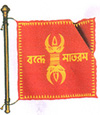
Indian Flag history started from the 20th Century to Pre-Independence Period. Sister Nivedita who was an Irish disciple of Swami Vivekananda made the first Indian flag and that’s why the flag came to be known as ‘Sister Nivedita’s Flag’. The flag contained Red and Yellow color where Red color signified freedom Struggle and yellow color was a symbol of victory. The flag had the words "Bonde Matoram" which was written in Bengali. The flag also contained a figure of ‘Vajra’, weapon of god ‘Indra’ and a white lotus in the middle. The Vajra signified strength and lotus depicts purity.
1906
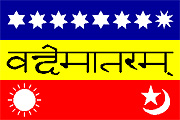
In 1906, another Indian flag was designed after Sister Nivedita’s flag using three colors: blue, yellow and red. This flag blue strip had 8 stars of slightly various shapes and red strip had 2 symbols. The first one symbol was the sun and second symbol was the star. The yellow stripe color had 'Vande Mataram' written on Devnagiri script .
Again in 1906 , Another version of the same flag came into existence containing orange, yellow and green colors. This flag was known as ‘Lotus flag or Calcutta flag’ and it signified the Indian unity and capacity of freedom struggle.
1907
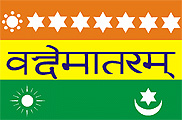
On 22 August 1907, Shyamji Krishna Varma, Madam Bhikaji Cama and Veer Savarkar together had designed a new flag and this flag came to be known as Madam Bhikaji Cama flag. This flag was very similar to the first flag except that the top strip had only one lotus but seven stars denoting the Saptarishi. In 1907, the flag was exhibited at a socialist conference in Berlin and thus this flag was also referred as Berlin Committee flag. This flag was made up of three colors: Green color at the top followed by golden saffron in the middle and the red color at the bottom. The flag had ‘Vande Mataram’ written on it.
1916
In 1916, Lokamanya Tilak and Dr. Annie Besant designed a new flag which was later hosted by Congress Session in Calcutta during the Home Rule Movement. Colors which were used in this flag are white, green, blue and red. Each color was used in a striped manner with different meaning.
1917
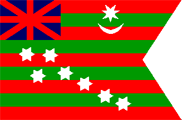
In 1917, the new flag was adopted by Bal Ganga Dhar Tilak who was the leader of the Home Rule League. The flag contains union jack at the top and the rest of the flag had five red and four blue stripes. There was also a white crescent and star in one corner. The flag had seven stars on it in the shape of ‘Saptarishi ‘ Constellation .However , the flag did not become popular at that time.
1921
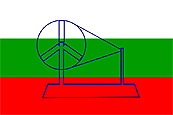
In 1921, Mahatma Gandhi in association with an Andhra youth who prepared the flag , designed the new flag containing three colors: white, green and red with the Charkha which was drawn across all the bands signifying the equality of all the communities of India. White color on the top of this flag signified minority communities of India. In the middle of this flag, green color was for Muslims. Red color on the bottom of this flag was for Hindu and Sikh communities and the spinning wheel to symbolize progress of the Nation. This flag pattern was based on the flag of Ireland. This flag was not formally adopted by the Indian National Congress.
1931
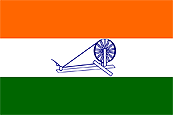
The year 1931 was a landmark in the history of the flag. A resolution was passed adopting a tricolor flag as our national flag and this flag, the forebear of the present one, was saffron, white and green with Mahatma Gandhi's spinning wheel at the center. It was, however, clearly stated that it bore no communal significance. The flag made by Pingali Venkayya was passed at the meeting of the congress committee in 1931 and was adopted as the official flag.
1947
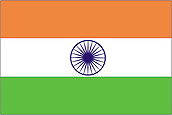
When India got independence in 1947, Rajinder Prasad held a committee to discuss the National Flag of India and finally decided to adopt the flag of Indian National Congress by replacing ‘Charkha’ in the middle with ‘Chakra’ (Wheel) which was a suitable modification. Thus, the tricolor flag of the Congress Party eventually became the tricolor flag of Independent India.
A line by Mahatma Gandhi:-
"A flag is a necessity for all nations. Millions have died for it. It is no doubt a kind of idolatry which would be a sin to destroy. For, a flag represents an Ideal The unfurling of the Union Jack evokes in the English breast sentiments whose strength it is difficult to measure. The Stars and Stripes mean a world to the Americans. The Star and the Crescent will call forth the best bravery in Islam."
"It will be necessary for us Indians Muslims, Christians Jews, Parsis, and all others to whom India is their home-to recognize a common flag to live and to die for."









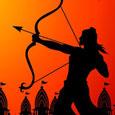 Ram Navami
Ram Navami Passover
Passover Good Morning
Good Morning